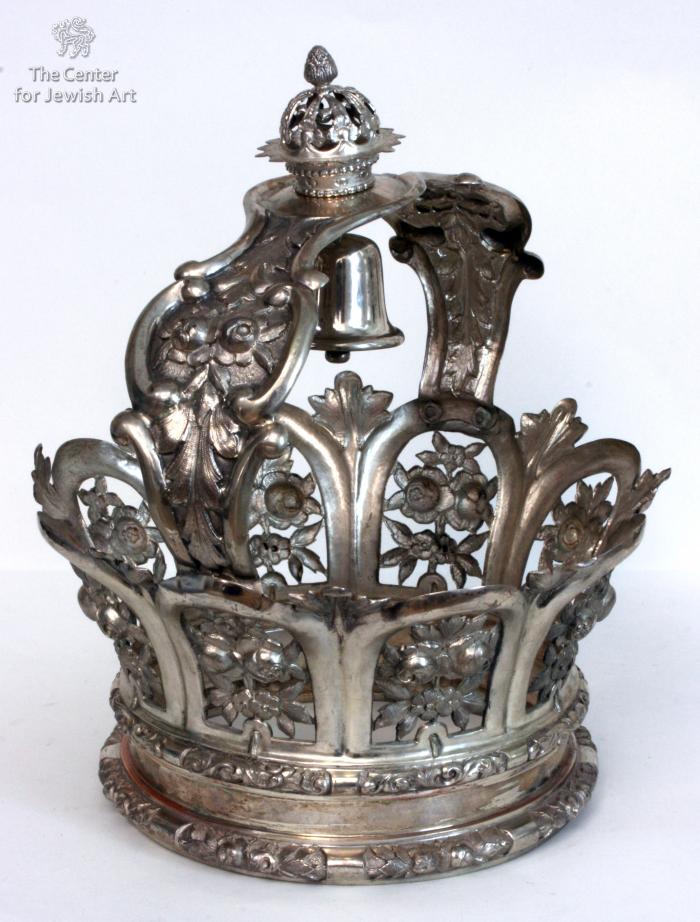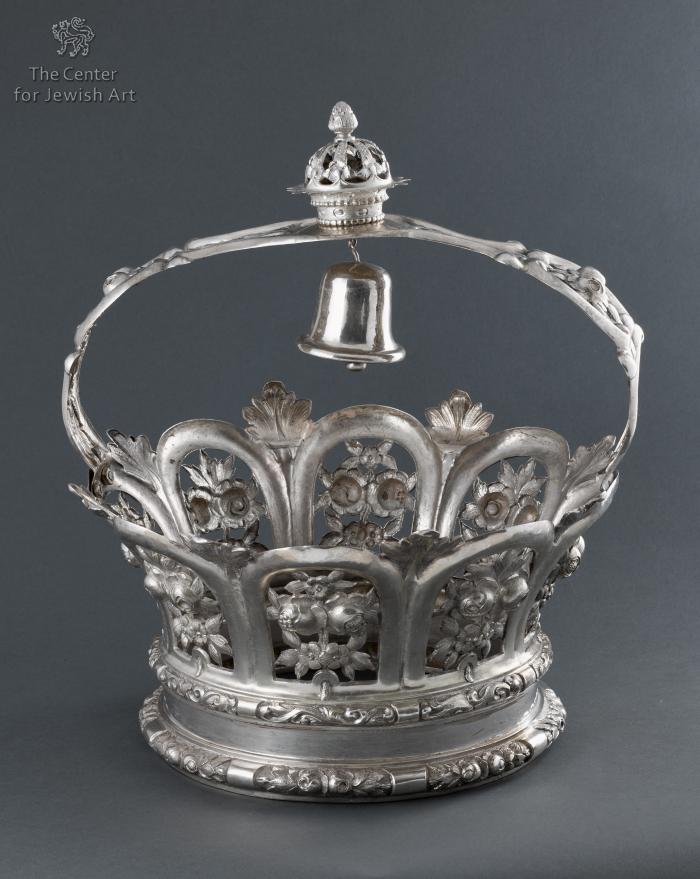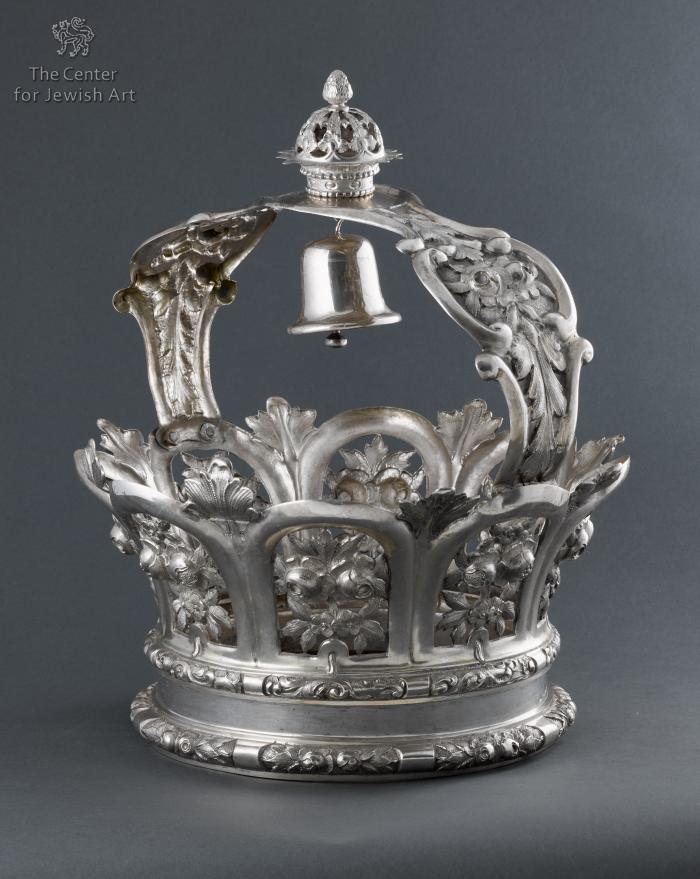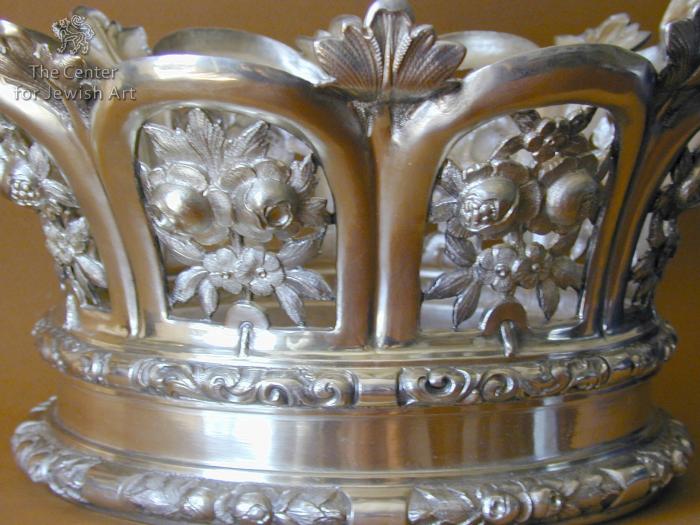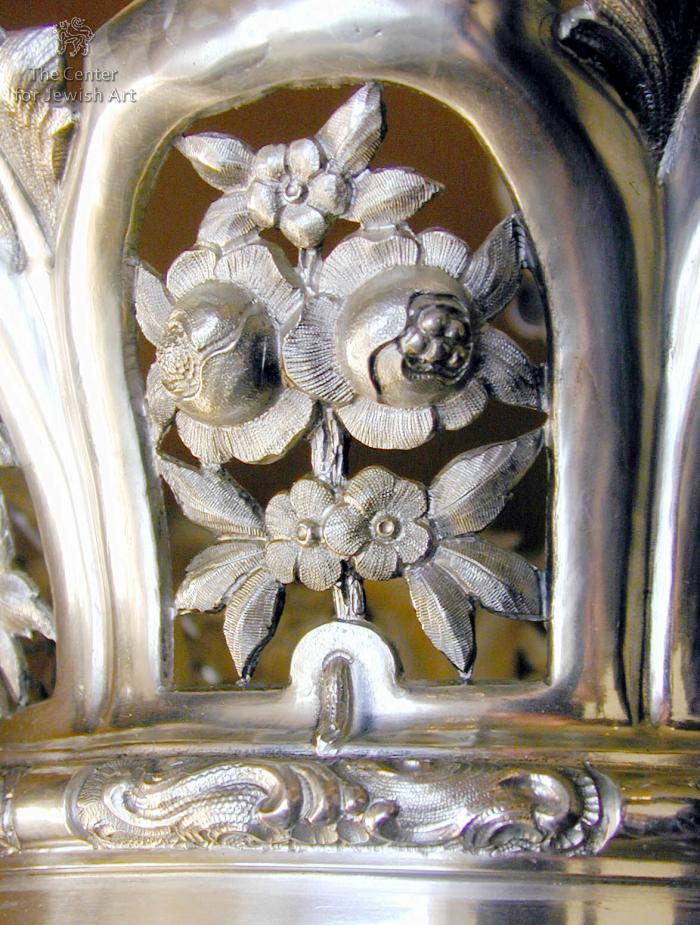Obj. ID: 40917 Torah crown, Vienna (Wien), circa 1875
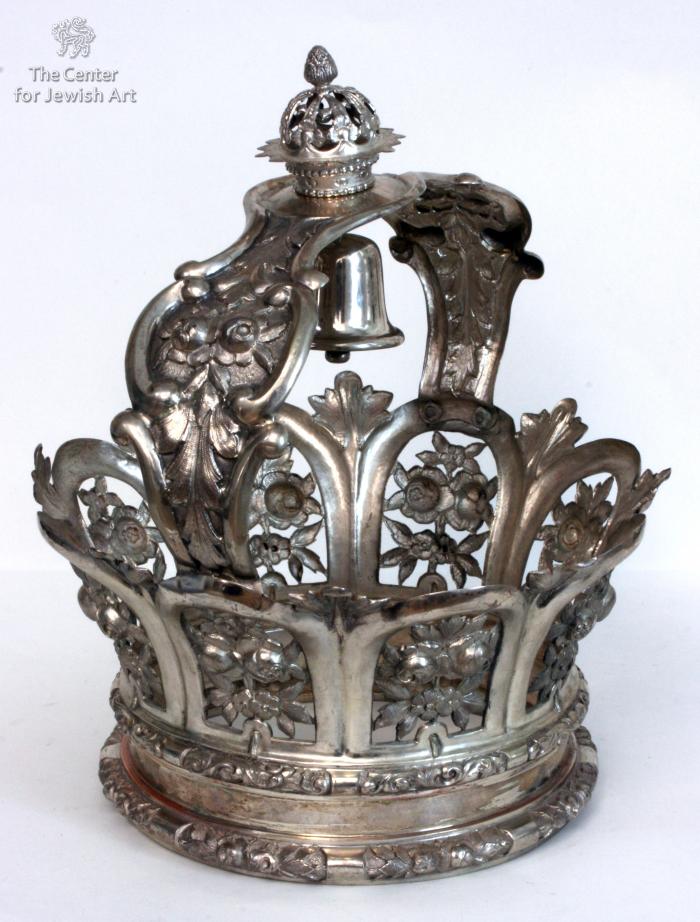
sub-set tree:
The following description was prepared by William Gross:
The earliest Torah ornaments are the Torah crown and the finials mounted on the Torah case or on the staves of the Torah scroll. We first hear of a Torah crown in the 11th century, in a responsum of Hai Gaon concerning the use of a crown for a Torah scroll on Simḥat Torah. The use of the Torah crown is linked in this responsum to the custom of crowning the so-called "*Bridegrooms of the Law," i.e., the persons called upon on Simḥat Torah to complete the annual cycle of the Torah reading and to initiate the new cycle. At the time, the Torah crown was an ad hoc object made from various decorative items, such as plants and jewelry. About a hundred years later, fixed crowns, made of silver and used regularly to decorate Torah scrolls in the synagogue, are mentioned in a document from the Cairo *Genizah. Their earliest depiction is in the 14th-century Spanish Sarajevo Haggadah.
Torah crowns are used in almost all communities (the exceptions are Morocco and Yemen), their design being influenced in each locality by local tradition. The onion-shaped or conical crown of the Iraqi-Persian Torah case follows the tradition of the crowns of the Sassanid kings, the last Persian dynasty prior to the Muslim conquest. In Cochin, India, and in Aden, the independent port of Yemen, a tapering dome-like crown developed through which protrude finials mounted on the staves on which the Torah scroll is wound; the crown is not fixed to the case. By the 20th century, the Torah crown in Cochin showed distinct European features. In Eastern Iran, where the Torah had a small crown, the outer sides of the crown lost their spherical shape and became flat dedicatory plaques. Today this crown looks like a pair of flat finials, and only their designation as "crowns" hints at their origin in the Torah crown. The circlet or coronet on the Mediterranean case, which became an integral part of the case, was based on a local medieval crown tradition typified by floral patterns. The European crown is shaped like a floral coronet with arms closing over it. In Eastern Europe a two- or three-tiered crown developed, inspired by the crown motif on the Torah Ark in this region. In Italy, on the other hand, the Torah crown was a coronet, known in Hebrew as the atarah.
This is a unique type crown was crafted for the Turkish/Sephardic synagogue in Vienna. In Turkey it was the custom to use together on the same scroll both a crown and Rimmonim, as in Italy. After the founding of the Turkish synagogue in Vienna, the congregants wished to continue the custom. They ordered a Vienna type crown from the local silversmiths and instead of two or three bands across the top as in the typical Viennese Torah crown, they ordered a crown with one such band only. This left room for the two Torah finials on each side. This resulted in a crown of Sephardic custom and Austrian form. There are four recorded examples of this type of crown in collections around the world and additional photographic evidence of the custom from the images from an inventory of the Turkish synagogue conducted in the 1920's. A least a part of those photographs are today in the archives of the Jewish museum of Vienna.


